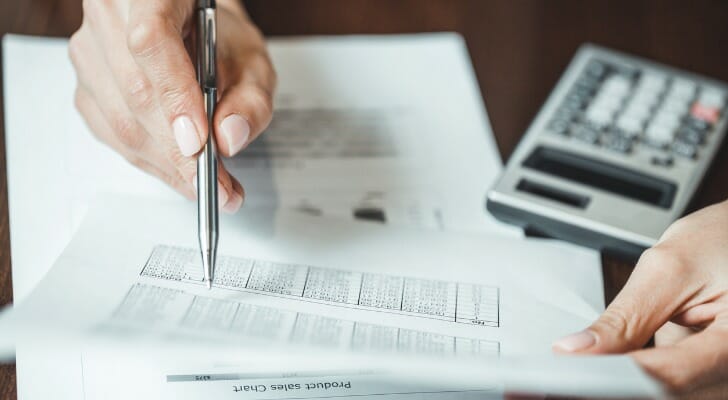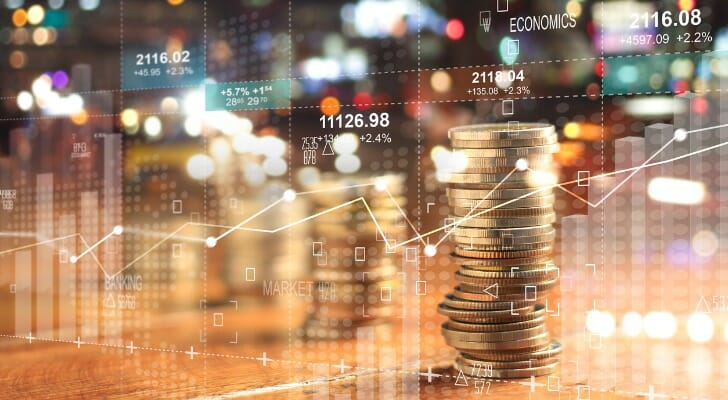 Corporations that pay dividends to stockholders usually make the payouts on a regular schedule, such as annually or quarterly. However, they sometimes opt for special dividends. These non-recurring cash dividends are usually much larger than the regular recurring dividends. Companies may use them to reward loyal shareholders when profits are unusually good, to distribute proceeds of sales of subsidiaries or other asset sales and, occasionally, to take advantage of changes in tax laws. The choices available to fixed-income investors are vast, so working with a financial advisor to get just the right mix for you can really pay.
Corporations that pay dividends to stockholders usually make the payouts on a regular schedule, such as annually or quarterly. However, they sometimes opt for special dividends. These non-recurring cash dividends are usually much larger than the regular recurring dividends. Companies may use them to reward loyal shareholders when profits are unusually good, to distribute proceeds of sales of subsidiaries or other asset sales and, occasionally, to take advantage of changes in tax laws. The choices available to fixed-income investors are vast, so working with a financial advisor to get just the right mix for you can really pay.
Relatively few companies issue special dividends, even those with lots of cash. In recent years, for example, Apple has often had $200 billion or more in cash on hand. However, rather than pay shareholders directly with a special dividend, the company regularly engages in massive buyback programs and also raises its regular dividend.
Reasons for Special Dividends
An unusually strong financial performance can prompt a special dividend. When a company has outsized earnings, it may choose to pay a special dividend rather than reinvest the extra cash in its business or use it for some other purpose.
Asset sales also sometimes correlated with special dividends. When a company recognizes a large gain on the sale of a subsidiary or other asset, it may choose to turn some or all the proceeds over to shareholders rather than using it for other corporate purposes.
Companies in cyclical industries sometimes pay out special dividends on a semi-regular basis. Before suspending its dividend at the start of the pandemic in 2020, Ford Motor Co., had regularly paid a quarterly dividend of $0.15 per share. In addition, once a year it issued a special dividend in an amount that varied depending on its earnings per share. This combination of regular and special dividends let the company keep up a regular dividend payout and reward shareholders who stuck with it through booms and busts in the cyclical auto industry.
Tax policy changes can also drive special dividends. In 2012, when treatment of capital gains changed significantly, many companies moved the date of their regular dividend payments up to help ease the tax burden on shareholders. This sort of special dividend is also called an accelerated dividend.
Sometimes companies issue a special dividend when making significant changes to their capital structure. Paying out a lump of cash to shareholders can instantly increase a company’s debt ratio, which may be desirable when converting to a different business format.
Investing for Special Dividends

The ex-dividend date marks the date when investors who buy a stock won’t be eligible to receive the dividend. As a result of its effect on a stock price, buying a stock that has declared a special dividend before the ex-dividend date, while entitling the buyer to the special dividend, generally results in no gain on the investment. Except for companies that use hybrid schemes combining regular and special dividends, it is difficult or impossible to know in advance when a company is going to issue a special dividend.
As a result, special dividends are generally regarded as primarily for the benefit of long-term shareholders.
Cons of Special Dividends
Investors usually appreciate receiving special dividends, but they can be seen as negatives. Some investors prefer companies that have accumulated stockpiles of cash to reinvest in the business, expand with acquisitions, engage in stock buybacks or increase regular dividends. Paying a special dividend can be viewed as an indicator that the company lacks opportunity in its core business.
Sometimes a special dividend reflects the overall economic climate. One of the biggest special dividends ever was Microsoft’s payment of $3 per share – a total of $32 billion – to its shareholders in 2004. At the time, the company had $60 billion in cash but growth was slowing and it faced antitrust scrutiny from regulators, which indicated against making acquisitions. In addition to the special dividend, Microsoft doubled its regular dividend and announced a large stock buyback program.
Bottom Line
 Companies that pay regular dividends to shareholders sometimes distribute one-time dividends as well. These special dividends are usually significantly larger than the regular dividends. Unusually strong profits, asset sales and tax policy changes may spur companies to issue special dividends. The dividends are difficult if not impossible to predict and dividend-seeking investors usually focus on stocks with reliable regular dividends rather than seeking those that might pay special dividends.
Companies that pay regular dividends to shareholders sometimes distribute one-time dividends as well. These special dividends are usually significantly larger than the regular dividends. Unusually strong profits, asset sales and tax policy changes may spur companies to issue special dividends. The dividends are difficult if not impossible to predict and dividend-seeking investors usually focus on stocks with reliable regular dividends rather than seeking those that might pay special dividends.
Tips on Investing
- Investing for dividends can be an effective way to build wealth. Experienced and qualified financial advisors can help investors use dividend strategies to reach long-term financial goals. SmartAsset’s free tool matches you with financial advisors in your area in five minutes. If you’re ready to be matched with local advisors, get started now.
- Dividend income is taxable. In particular, qualified dividends, which you will run into if you invest in U.S.-based companies, are taxable at a long-term capital gains rate. Research which taxes and at what rate you may have to pay on your dividend-paying investments with SmartAsset’s free capital gains calculator.
Photo credit: ©iStock.com/Deepak Sethi, ©iStock.com/NoSystem images, ©iStock.com/ipopba